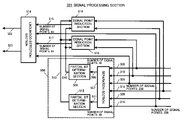Maximize Network Performance with Signal Systems
Introduction
In the world of telecommunications, wireless communication, and broadcasting, efficient signal transmission and reception are essential for providing high-quality services. Whether it’s ensuring that a mobile network stays connected, or that a broadcast signal reaches its audience without interruption, having reliable technology that maximizes network performance is key. Our patented receiving and transmitting apparatus offers a powerful solution that enhances the quality, reliability, and efficiency of signal transmission across diverse industries.
The Need for High-Performance Communication Systems
As demand for faster, more reliable communication systems grows, traditional apparatuses for receiving and transmitting signals face limitations. With increasing data loads, interference, and the push for higher quality signals, current systems often fall short in providing the required performance. Poor reception, dropped connections, and degraded signal quality can significantly impact user experiences, especially in high-demand environments like telecommunications and broadcasting.
The challenge for industries is to find technology that not only meets current demands but also anticipates future needs—offering the ability to adapt to high data loads, reduce interference, and ensure consistent signal quality.
Why Choose Maximize Network Performance?
Our advanced receiving and transmitting apparatus is designed to meet these challenges head-on. It optimizes the transmission and reception of signals, providing stronger, clearer connections even in challenging environments. By reducing signal interference and enhancing bandwidth efficiency, this technology ensures seamless communication across wireless networks, broadcasting platforms, and other telecom applications.
The apparatus can be integrated into a variety of systems, from mobile networks and broadcasting stations to consumer electronics and industrial communication systems. Its versatility allows it to be customized for specific applications, ensuring that users get the highest quality performance without interruptions. With this technology, businesses can offer a reliable, robust solution to improve connectivity and communication.
Key Benefits
- Superior Signal Strength: Enhances both signal transmission and reception for stronger connections.
- Reduced Interference: Minimizes disruptions, ensuring uninterrupted communication.
- Versatile Applications: Suitable for telecommunications, broadcasting, and wireless networks.
- Optimized Performance: Improves data transmission efficiency and bandwidth management.
Elevate Your Connectivity with Maximize Network Performance
Licensing this receiving and transmitting apparatus provides companies with an advanced solution for improving communication systems. Whether you’re in telecommunications, broadcasting, or wireless networking, this technology delivers the signal strength and reliability needed for high-performance connectivity, keeping your network running smoothly.

- Abstract
- Claims
1. A receiving apparatus that receives modulated signals transmitted from a transmitting apparatus that transmits different modulated signals from a plurality of antennas, said receiving apparatus comprising:
4. The receiving apparatus according to claim 1, wherein said partial bit demodulation section comprises:
5. The receiving apparatus according to claim 1, wherein said partial bit demodulation section comprises:
6. The receiving apparatus according to claim 1, wherein said partial bit demodulation section comprises:
7. A partial bit determination method comprising:
Share
Title
Receiving apparatus and transmitting apparatus
Inventor(s)
Yutaka Murakami, Kiyotaka Kobayashi, Masayuki Orihashi, Akihiko Matsuoka
Assignee(s)
Panasonic Intellectual Property Corp of America
Patent #
7715504
Patent Date
May 11, 2010
